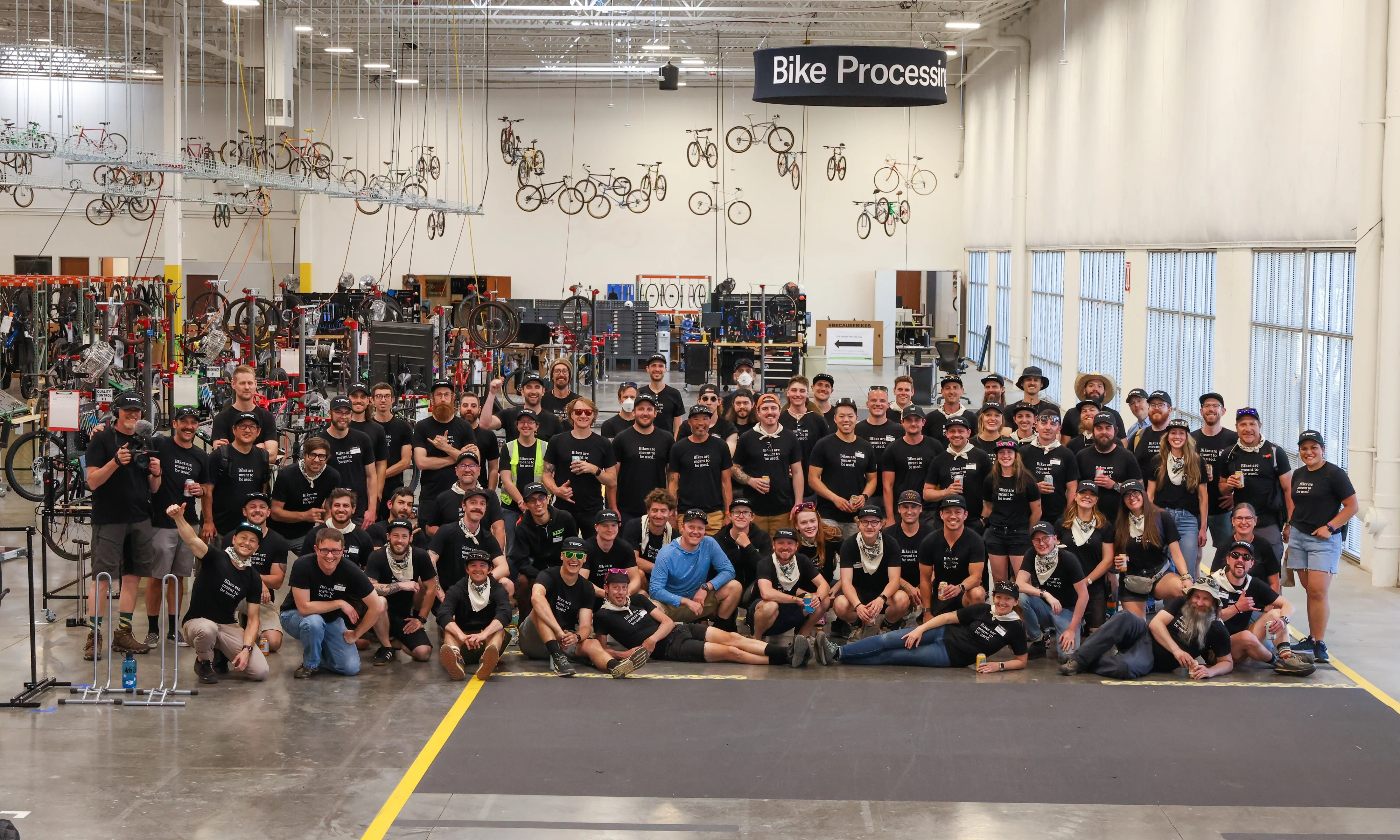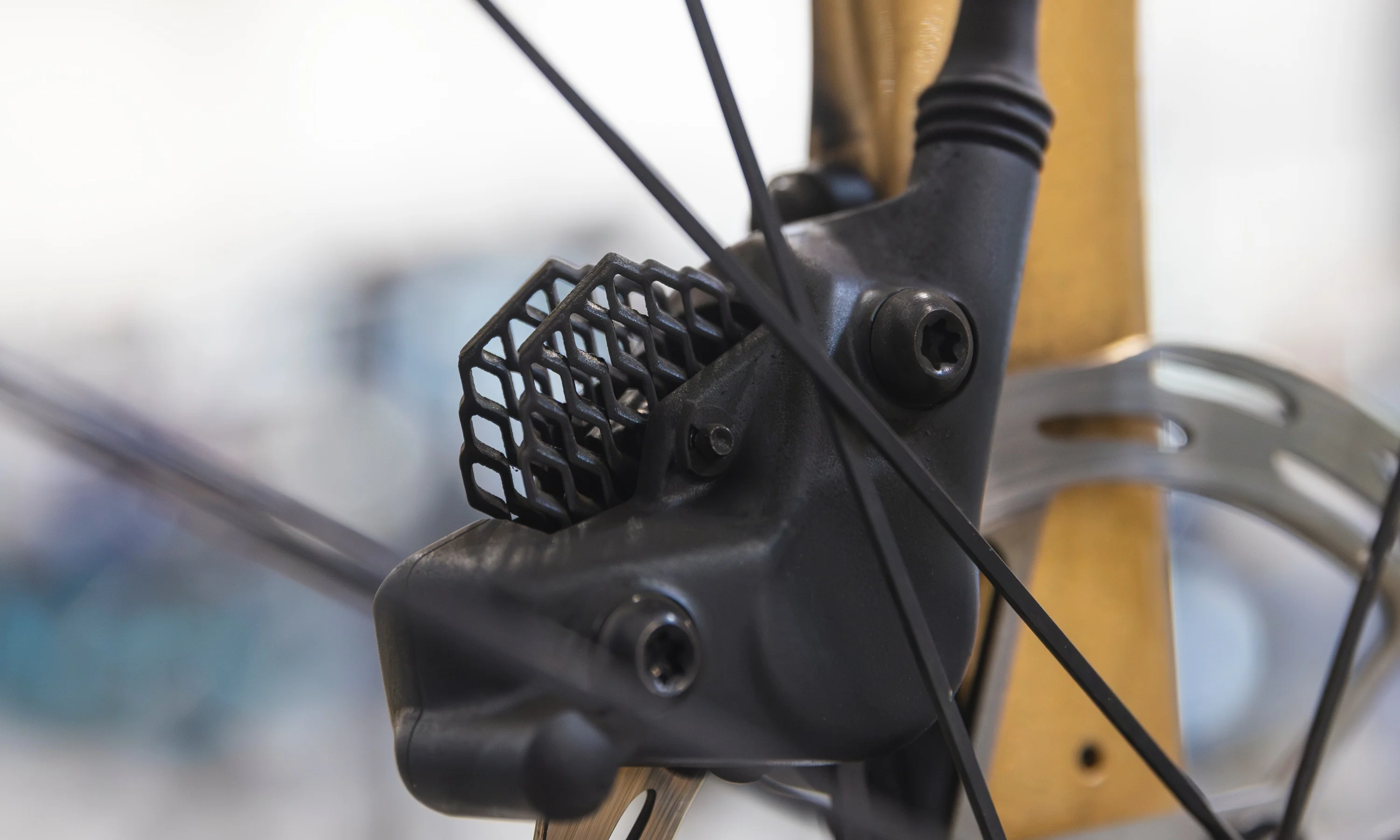The “Stumpy” is the most iconic and popular mountain bike ever produced. Today, it is the epitome of the quiver-killer trail bike, the type of machine that can tackle everything from long cross-country rides to gnarly enduro stages.
Browse our used mountain bike inventory and you’ll find a huge selection of Stumpjumpers to choose from. But which one is right for you?
The Stumpjumper has changed a lot over the years, and since 2016, it has undergone three major redesigns. Another major update is expected for the 2025 model year. As a result, there are many versions of the Stumpjumper available on the used market with different wheel sizes, suspension travel, geometry, and other features.
This guide will dive into the last three generations (2016-Current), explaining what makes each Stumpjumper unique.
Contents
- The history of the Specialized Stumpjumper
- Stumpjumper build levels explained
- 2016-2018 Stumpjumper models
- 2019-2020 Stumpjumper models
- 2021-2024 Stumpjumper models
[button]Shop Mountain Bikes[/button]
The History of the Specialized Stumpjumper
When Specialized introduced the Stumpjumper in 1981, it was the first mass-production mountain bike. In the early days of the sport, riders had to choose between cruisers modified for off-road use (often known as “klunkers”) or expensive custom bikes made by a few small builders. This 2007 Stumpjumper Classic is a reproduction of the original Stumpjumper, made to celebrate its 25th anniversary.
This 2007 Stumpjumper Classic is a reproduction of the original Stumpjumper, made to celebrate its 25th anniversary.
The Stumpjumper was an affordable alternative that matched the geometry and performance of custom, purpose-built mountain bikes. The original Stumpjumper produced in Japan was based on a custom Lighthouse Cycles Chaparral mountain bike designed by Tim Neenan. The original Stumpjumper is considered historically significant enough to be on display in the Smithsonian.
 Ned Overend's race-winning 1992 Stumpjumper M2.
Ned Overend's race-winning 1992 Stumpjumper M2.
As mountain biking evolved, so did the Stumpjumper. The original was a fully-rigid, steel-framed XC bike. In 1991, Specialized introduced the first Stumpjumper M2 which used a lightweight aluminum frame. Former world champion and legendary XC racer Ned Overend rode the Stumpjumper M2 hardtail to win the NORBA national championships in 1991 and 1992, along with two World Cup victories.
 A 2016 Stumpjumper Pro 29 HT, the final year of the Stumpjumper hardtail.
A 2016 Stumpjumper Pro 29 HT, the final year of the Stumpjumper hardtail.
The hardtail version of the Stumpjumper (sometimes named “Stumpjumper HT”) was the flagship XC hardtail in Specialized’s line-up until 2017 when it was replaced with the Epic Hardtail. The Stumpjumper HT has since been discontinued, and for the purpose of simplicity, this guide will only focus on the more recent full-suspension models.
 The Stumpujumper's famous FSR suspension is easy to identify thanks to the pivot just in front of the rear axle.
The Stumpujumper's famous FSR suspension is easy to identify thanks to the pivot just in front of the rear axle.
In 1993, Specialized introduced the first full-suspension Stumpjumper, the Stumpjumper FSR. It used Specialized’s FSR suspension system, which stands for “Future Shock Rear,” a "four-bar" suspension or "Horst-link" design. This design has been used on all full-suspension Stumpjumpers until it was replaced with a single-pivot/flexstay suspension system on the 2021+ carbon Stumpjumper. The 2021+ Stumpjumper EVO, however, still uses the FSR system.
 Former downhill world champion Miranda Miller descending hard on a 2019 S-Works Stumpjumper. Photo courtesy of Specialized Bicycles.
Former downhill world champion Miranda Miller descending hard on a 2019 S-Works Stumpjumper. Photo courtesy of Specialized Bicycles.
The modern Stumpjumper generally fits into the mid-travel trail bike category. It caters to riders who want a capable all-rounder for both climbing and descending. For the majority of trail riders, the Stumpjumper is the perfect do-it-all bike.
[button]Shop Mountain Bikes[/button]
Specialized Stumpjumper Build Levels Explained
 S-Works Stumpjumpers are easy to identify thanks to the S-Works banding.
S-Works Stumpjumpers are easy to identify thanks to the S-Works banding.
Specialized offers the Stumpjumper in different component trims, which are indicated by the model name. The Stumpjumper hierarchy ranked from lowest to highest is:
- Comp
- Expert
- Pro
- S-Works
These are the most common Stumpjumper builds and they vary in component spec level.
For 2019+ models, Specialized also offers a base-level Stumpjumper below Comp, with an aluminum frame and basic components.
There are also "EVO" models which have more downhill oriented builds "LTD" models which are limited edition offerings with unique paint or components.
Stumpjumper Comp vs. Expert vs. Pro vs. S-Works
As an entry-level build, a Stumpjumper Comp will use less expensive, entry-level components (alloy cockpit, budget suspension, budget drivetrain, alloy wheels).
Stumpjumper Comp models are also available with either carbon or aluminum frames. This is often designated in the model name (e.g. Stumpjumper Comp Alloy vs. Stumpjumper Comp Carbon).
As you go up in the build hierarchy to the Expert and Pro models, bikes will get spec'd with higher-end components (carbon cockpits, mid-range suspension, mid-range drivetrains, carbon wheels).
The premium offering, an S-Works Stumpjumper, will use top-of-the-line components as well a higher grade carbon fiber in the frame. As a result, S-Works frames are generally 200-300 grams lighter.
In general, as builds get higher-end they will be have better drivetrains, better suspension, lighter, more feature packed components, and have better resale value.
2016-2018 Specialized Stumpjumper models
This generation of Stumpjumper came in three versions based on wheel size:
Highlights:
- This is the first Stumpjumper generation with Boost hub spacing — a 12x148mm rear axle and 15x110mm fork.
- All models came with proprietary rear shocks with “Autosag,” which helped riders easily dial-in suspension sag. To set-up, over-inflate the air chamber so the bike is totally extended, sit on the bike with the shock fully open, then press the Autosag button to bleed out the excess air. It automatically sets the Stumpjumper to around 25% sag.
- Because of the proprietary shock mount, this generation Stumpjumper is not compatible with aftermarket shocks. However, custom aftermarket suspension yokes are available if riders wish to swap the Specialized specific shock for an aftermarket shock. There's a good chance many used Stumpjumpers from this generation will have an aftermarket yoke and shock.
- This is the first generation to use the Specialized SWAT door, a storage system built into the downtube for carrying spare tubes, tools, food, or other small items. The SWAT door is only available on carbon models.
- The Stumpjumper Comp Carbon and Expert frames are built with a FACT 9m carbon front triangle and the M5 aluminum rear triangle.
- Stumpjumper Pro and S-Works frames are full carbon, with a FACT 11m carbon front and rear triangle.
Specialized Stumpjumper 29
 2018 Specialized Stumpjumper Comp Carbon 29 sold at The Pro's Closet
2018 Specialized Stumpjumper Comp Carbon 29 sold at The Pro's Closet
Wheel size: 29”
Suspension travel: 150mm front / 135mm rear
Head tube angle: 67°
Seat tube angle: 74°
Reach: 413mm (M) / 431mm (L)
Specialized Stumpjumper 650b
 2018 Specialized Stumpjumper Comp Carbon 650b sold at The Pro's Closet
2018 Specialized Stumpjumper Comp Carbon 650b sold at The Pro's Closet
Wheel size: 27.5”
Suspension travel: 150mm front / 150mm rear
Head tube angle: 67°
Seat tube angle: 74°
Reach: 413mm (M) / 431mm (L)
Specialized Stumpjumper 6Fattie
This was the only Stumpjumper generation to offer the "6Fattie" version, which used 2.8-3.0” wide 27.5-plus tires for more comfort and traction.  2018 Specialized S-Works Stumpjumper 6Fattie sold at The Pro's Closet
2018 Specialized S-Works Stumpjumper 6Fattie sold at The Pro's Closet
Wheel size: 27.5” Plus
Suspension travel: 150mm front / 135mm rear
Head tube angle: 67°
Seat tube angle: 74°
Reach: 413mm (M) / 431mm (L)
2019-2020 Specialized Stumpjumper models
This generation of Stumpjumper came in six versions offering different options for suspension travel, geometry, and wheel size:
- Stumpjumper 29
- Stumpjumper 27.5
- Stumpjumper ST 29
- Stumpjumper ST 27.5
- Stumpjumper EVO 29
- Stumpjumper EVO 27.5
Highlights:
- Redesigned from the ground up with an asymmetric carbon frame based on the previous generation’s Specialized Demo downhill bike. A carbon arm extends around the right side of the rear shock adding support and lateral stiffness for better tracking through rough terrain.
- Geometry was tweaked to be slightly longer and slacker than the previous generation.
- The suspension kinematics were made more progressive to reduce bottom-out during big hits.
- The proprietary shock mount and Autosag were eliminated, so this generation Stumpjumper is compatible with most aftermarket shocks.
- A flip chip was added to the rear shock yoke to adjust between high and low geometry positions. Bikes come from the factory in the low position. Flipping to the high position steepens the head angle 0.5° and raises the bottom bracket 6mm for more agility.
- All carbon frames from Comp to S-Works use a full carbon FACT 11m front and rear triangle.
- SWAT door on carbon models.
- Specialized also introduced the Stumpjumper ST or “short travel” variant and reintroduced the downhill-focused Stumpjumper EVO variant.
- The Stumpjumper 6Fattie was discontinued for the 2019 model year, but Stumpjumper 27.5 models have enough clearance to fit up to 27.5 x 3.0" plus tires.
Specialized Stumpjumper 29
 2019 Specialized S-works Stumpjumper 29 sold at The Pro's Closet.
2019 Specialized S-works Stumpjumper 29 sold at The Pro's Closet.
Wheel size: 29”
Suspension travel: 150mm front / 140mm rear
Head tube angle: 66.5°
Seat tube angle: 74.8°
Reach: 425mm (M) / 445mm (L)
Specialized Stumpjumper 27.5
 2019 Specialized S-works Stumpjumper 27.5 sold at The Pro's Closet
2019 Specialized S-works Stumpjumper 27.5 sold at The Pro's Closet
Wheel size: 27.5”
Suspension travel: 150mm front / 150mm rear
Head tube angle: 65.5°
Seat tube angle: 75°
Reach: 435mm (M) / 455mm (L)
Specialized Stumpjumper ST
The Stumpjumper ST takes the standard Stumpjumper platform and reduces the travel by 20mm. The reduced travel combined with slightly steeper geometry means the bike will feel more agile and efficient than the standard Stumpjumper, ideal for people who ride mellower trails. The Stumpjumper ST replaced the Camber in Specialized’s line-up.
Specialized Stumpjumper ST 29
 2019 Specialized Stumpjumper ST Comp Carbon 29 Womens sold at The Pro's Closet
2019 Specialized Stumpjumper ST Comp Carbon 29 Womens sold at The Pro's Closet
Wheel size: 29”
Suspension travel: 130mm front / 120mm rear
Head tube angle: 67.5°
Seat tube angle: 75.5°
Reach: 435mm (M) / 455mm (L)
Specialized Stumpjumper ST 27.5
 2019 Specialzied S-Works Stumpjumper ST 27.5 sold at The Pro's Closet
2019 Specialzied S-Works Stumpjumper ST 27.5 sold at The Pro's Closet
Wheel size: 27.5”
Suspension travel: 130mm front / 130mm rear
Head tube angle: 66.5°
Seat tube angle: 76°
Reach: 444mm (M) / 465mm (L)
Specialized Stumpjumper EVO
To increase downhill performance, Specialized experimented with the Stumpjumper’s geometry. The Stumpjumper EVO had a longer reach and an impressively slack 63.5-degree head tube, making it the most progressive bike in Specialized’s line-up at the time. It was also the first Stumpjumper to come equipped with a reduced offset fork.
The 2019 Stumpjumper Evo also was the first to use Specialized’s S-Sizing system. This does away with traditional small, medium, and large sizes, and focuses on reach and wheelbase. Standover clearance and stack height remain relatively low across sizes, so riders can choose their size based on their desired length.
This generation Stumpjumper EVO only came in two sizes, S2 and S3, which roughly equate to medium and large.
Specialized Stumpjumper EVO 29
 2020 Specialized Stumpjumper EVO Carbon Comp 29 sold at The Pro's Closet
2020 Specialized Stumpjumper EVO Carbon Comp 29 sold at The Pro's Closet
Wheel size: 29”
Suspension travel: 150mm front / 140mm rear
Head tube angle: 63.5°
Seat tube angle: 76° (S2) / 75.6° (S3)
Reach: 445mm (S2) / 475mm (S3)
Specialized Stumpjumper EVO 27.5
 2019 Specialized Stumpjumper EVO Pro Carbon 27.5 with coil shock sold at The Pro's Closet
2019 Specialized Stumpjumper EVO Pro Carbon 27.5 with coil shock sold at The Pro's Closet
Wheel size: 27.5”
Suspension travel: 150mm front / 150mm rear
Head tube angle: 63.5°
Seat tube angle: 76° (S2) / 75.6° (S3)
Reach: 465mm (S2) / 490mm (S3)
2021-2024 Specialized Stumpjumper models
This generation of Stumpjumper comes in two versions with different suspension travel and geometry:
Highlights:
- All new Stumpjumpers use Specialized’s S-Sizing system like the previous-generation Stumpjumper EVO. Sizes are available from S1 to S6 (~XS to XL), giving riders a huge range of options.
- Geometry has been revised with significantly longer reach, slacker head tube angles, and steeper seat tube angles to match modern geometry trends.
- All models are now equipped with reduced offset forks.
- The carbon Stumpjumper features a completely new suspension design focused on reduced weight and improved efficiency.
- The new Stumpjumper EVO introduces more adjustability for head angle, bottom bracket height, and wheel size.
- All carbon frames from Comp to S-Works use a full carbon FACT 11m front and rear triangle.
- SWAT door on carbon models
- The short-travel Stumpjumper ST has been discontinued. Riders looking for a similar short-travel trail bike should look to the 2021+ Epic EVO.
Specialized Stumpjumper
The carbon 2021+ Stumpjumper is the first full-suspension Stumpjumper to not use an FSR suspension system. It has switched to a linkage-driven single pivot design with carbon flex-stays. This is essentially the same system introduced on the 2021+ Specialized Epic. It eliminates moving parts to reduce weight while also improving pedaling efficiency.
However, because the entry-level Stumpjumper Alloy uses an aluminum rear triangle, it continues to use the more traditional four-bar FSR system.
The suspension flip chip is still present and can be flipped to the high position which steepens the head angle 0.5° and raises the bottom bracket 7mm for more agility.
 2021 Specialized Stumpjumper Comp sold at The Pro's Closet
2021 Specialized Stumpjumper Comp sold at The Pro's Closet
Wheel size: 29”
Suspension travel: 140mm front / 130mm rear
Head tube angle: 65°
Seat tube angle: 76°
Reach: 430mm (S2) / 450mm (S3) / 475mm (S4) / 500mm (S5)
Specialized Stumpjumper EVO
The updated Stumpjumper EVO maximizes geometry adjustability. A headset insert allows for 1° of head angle adjustment in either direction. A chip on the chainstays allows for another 0.5° of head angle adjustment accompanied by 10mm of bottom bracket adjustment. This means the head angle can be changed from 63° to 65.5°.
In total there are six possible configurations that allow riders to adjust the bike to suit their riding style or terrain, and adjustment should only take a few minutes. Specialized also has a geometry finder that can help riders select the geometry settings for their needs. The Stumpjumper EVO comes from the factory in the middle/high position, with a 64.5° head angle.
The largest two sizes, S5 and S6, also have longer chainstays to help accommodate taller riders and keep them more centered on the bike.
Specialized also states that the Stumpjumper EVO can also be set-up in “mullet-mode” with a 27.5” rear wheel for riders seeking more agility or tire clearance.
The 2021 Stumpjumper EVO was only available with a carbon frame. An aluminu version was introduced for the 2022 model year. Both carbon and aluminum frames come with SWAT storage in the downtube.
 2021 Specialized Stumpjumper EVO Comp
2021 Specialized Stumpjumper EVO Comp
Wheel size: 29” (Mullet compatible)
Suspension travel: 160mm (S2-S6), 150mm (S1) front / 150mm rear
Head tube angle: 64.5° (adjustable from 63° to 65.5°)
Seat tube angle: 77.6° (S2) / 77.2° (S3) / 76.9° (S4) / 77° (S5)
Reach: 428mm (S2) / 448mm (S3) / 475mm (S4) / 498mm (S5)
2025+ Specialized Stumpjumper
The Specialized Stumpjumper will likely receive a major update in late 2024 for the 2025 model year. I'll update this space if/when the new version of the Stumpjumper gets released.
Likely updates:
- Increased travel to 140mm travel rear with a 150mm fork
- EVO models with ~160mm fork and different shock options
- Geometry updates with slightly more reach and slightly slacker head angles
- Return to FSR suspension?
[button]Shop Mountain Bikes[/button]













